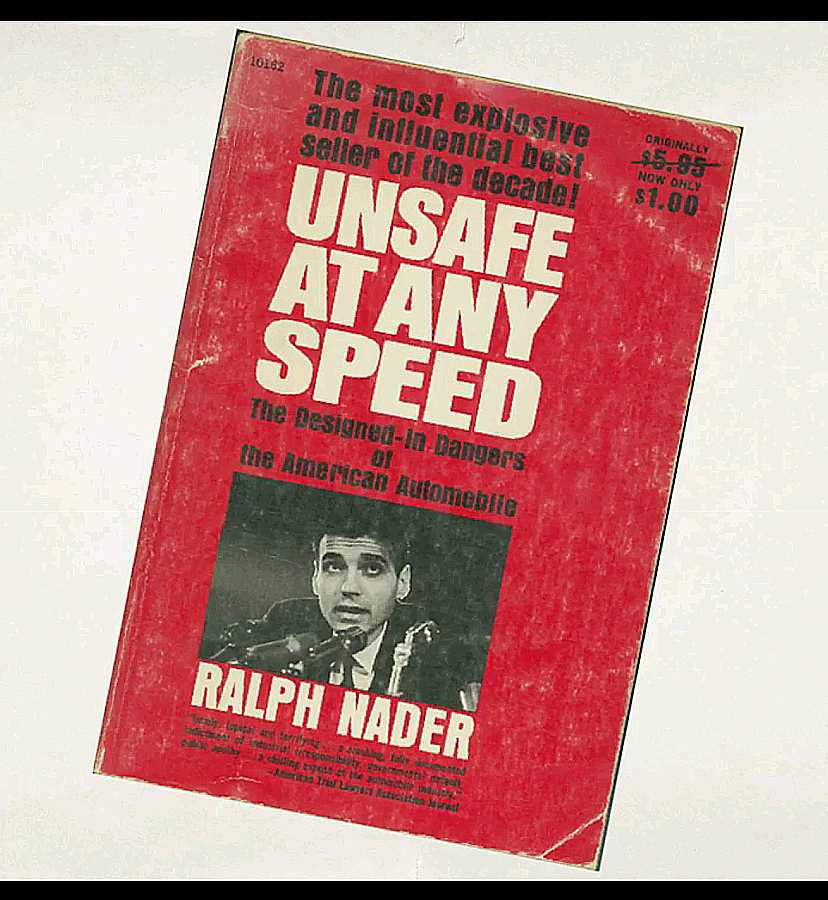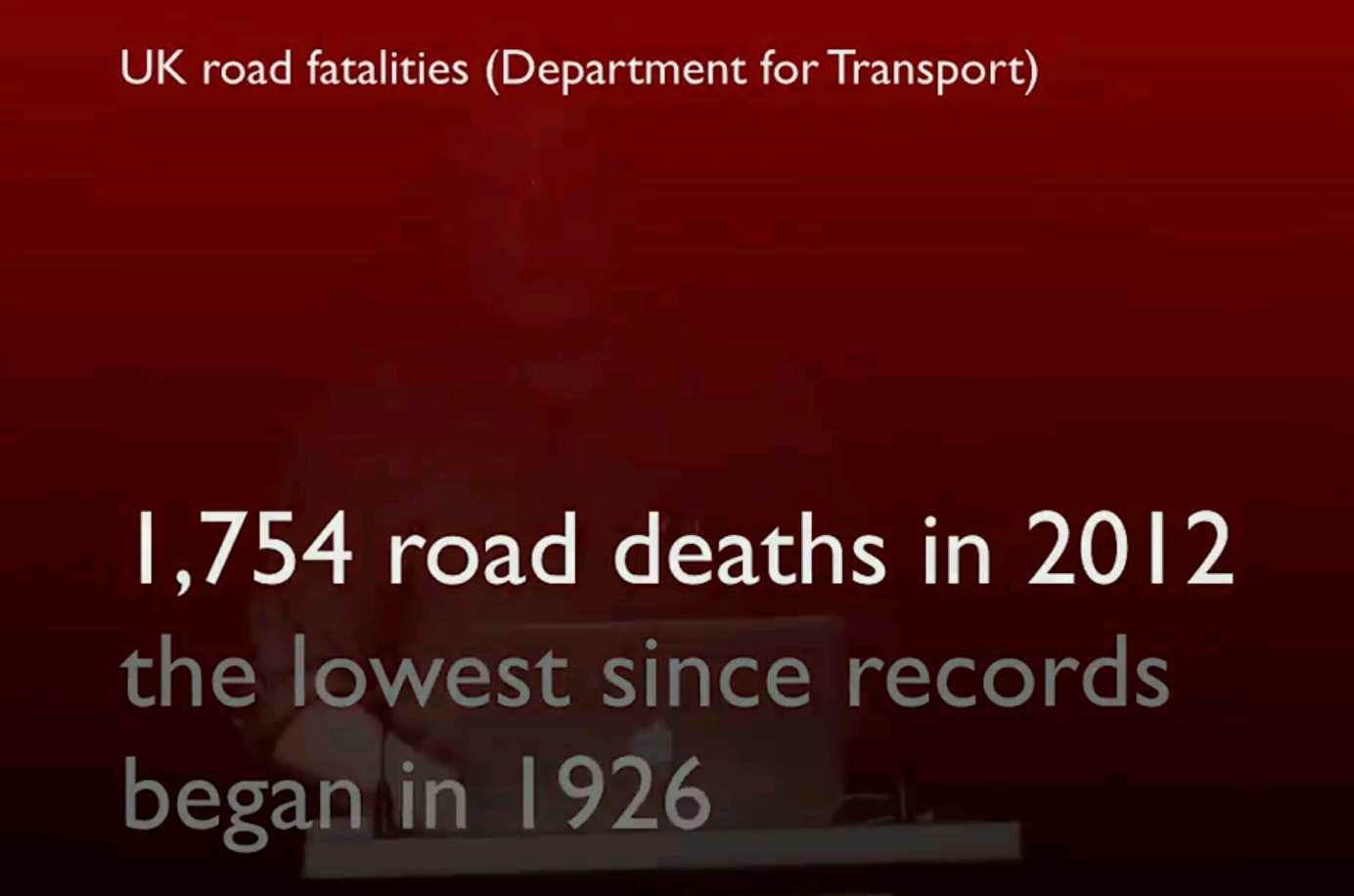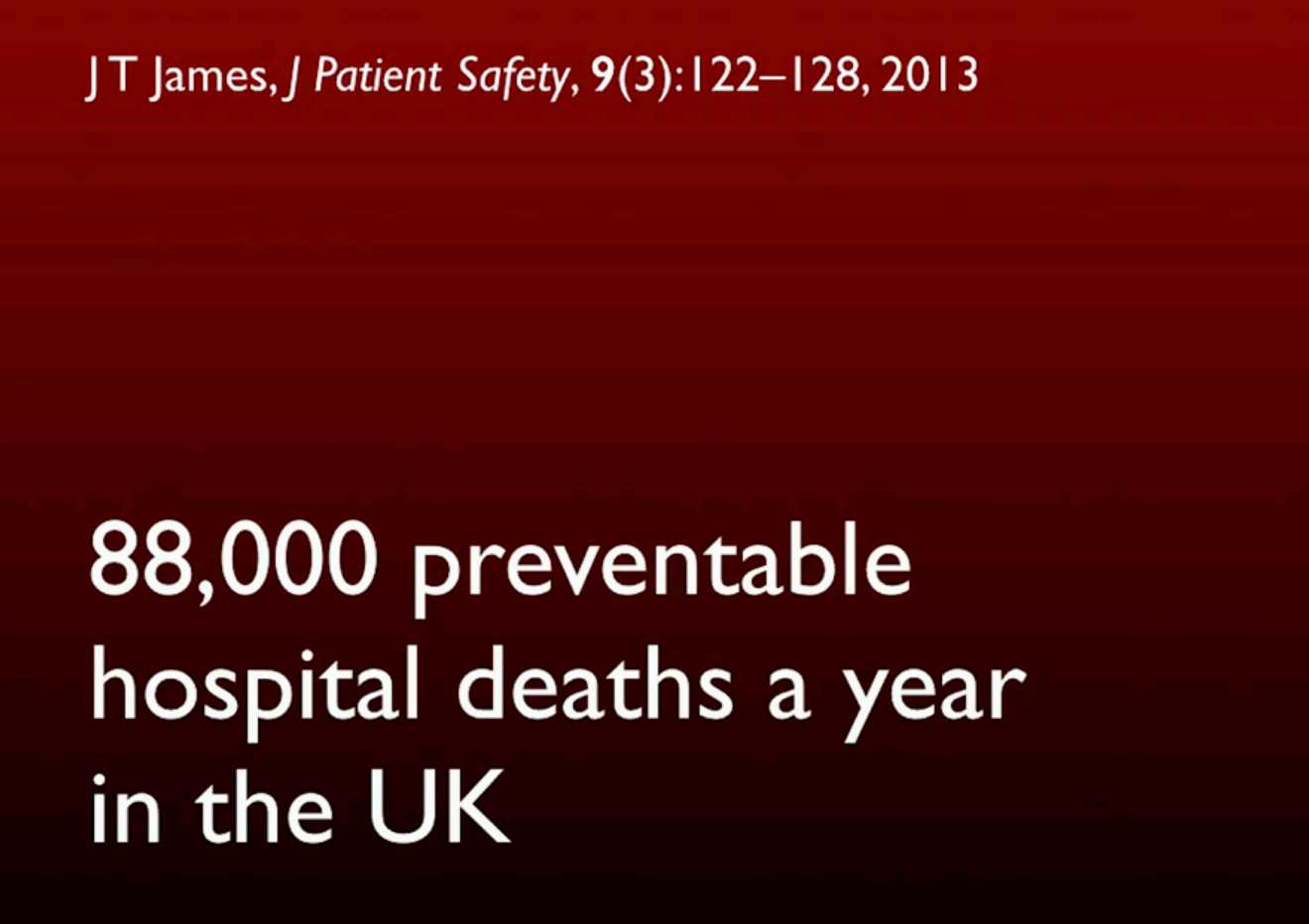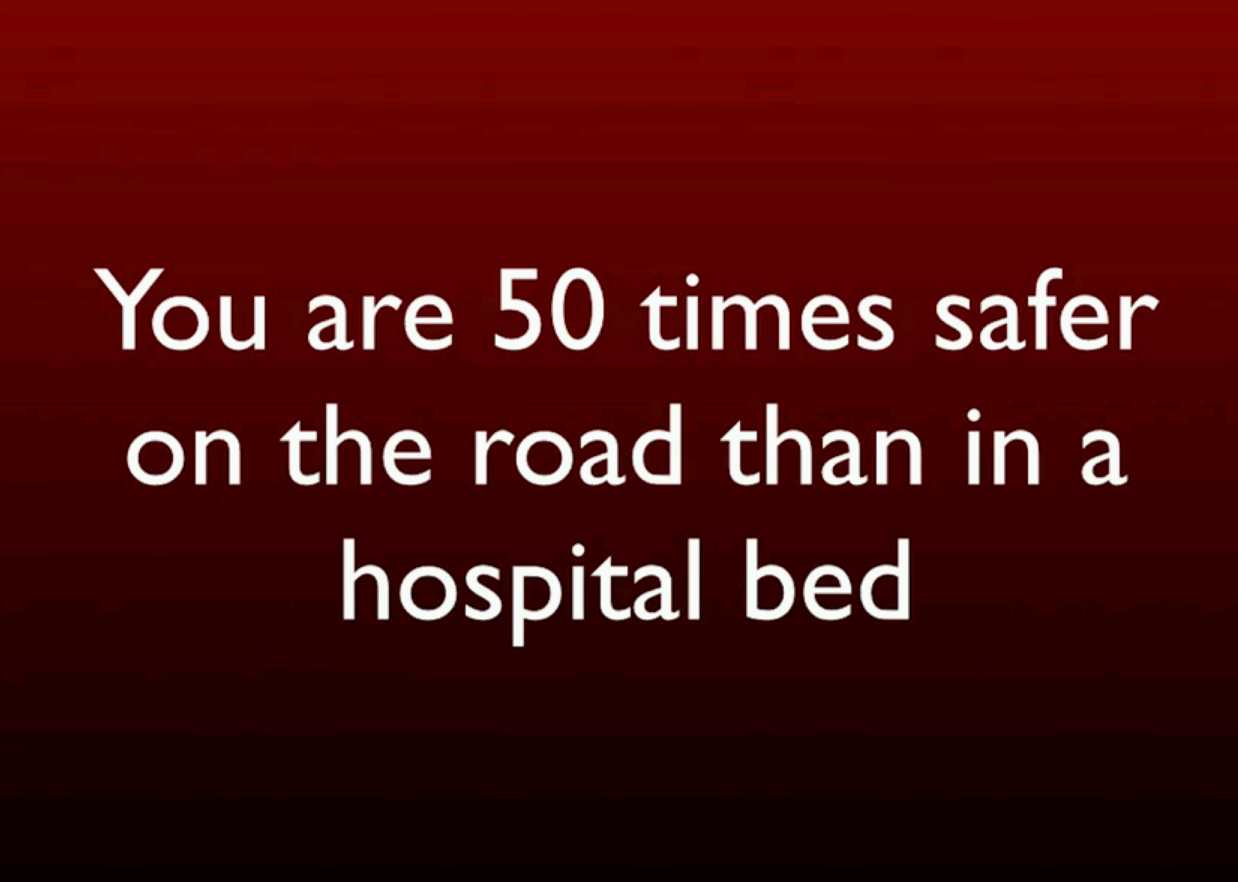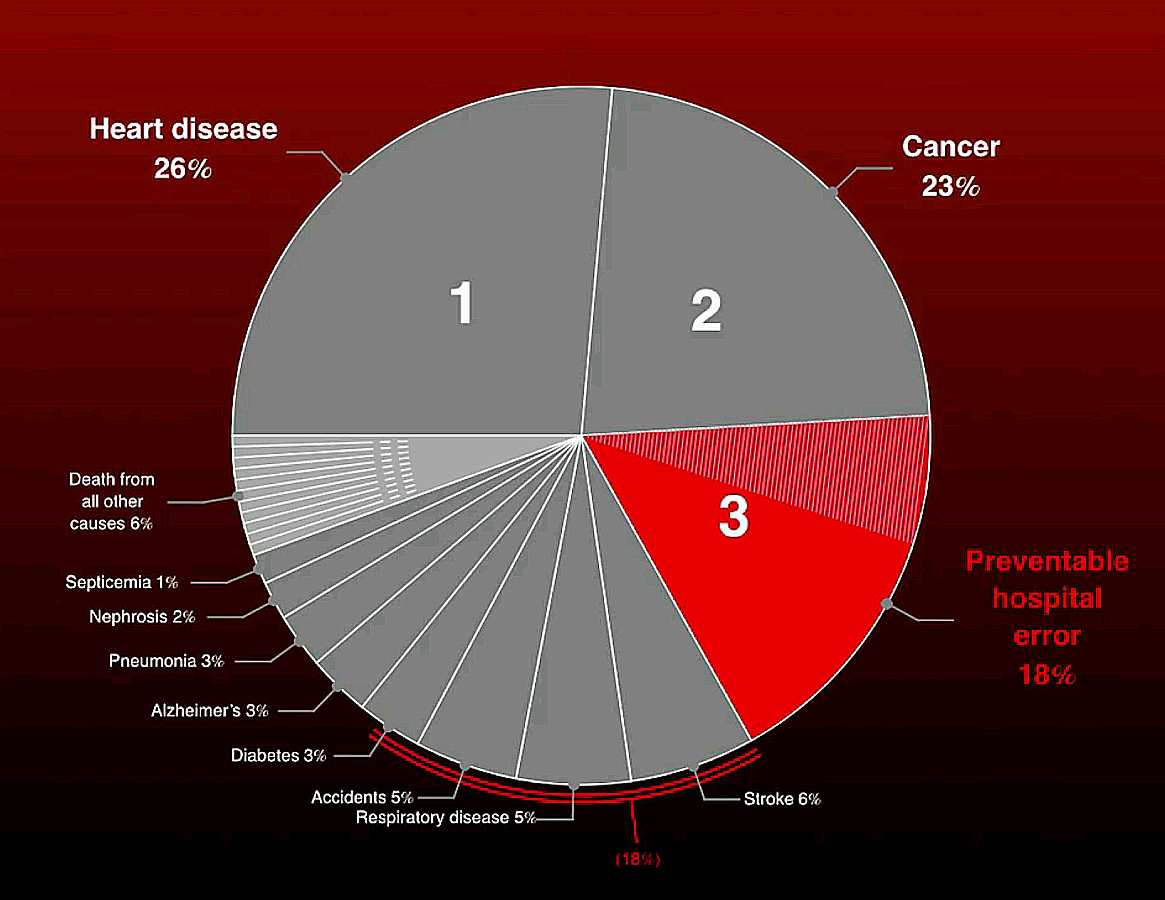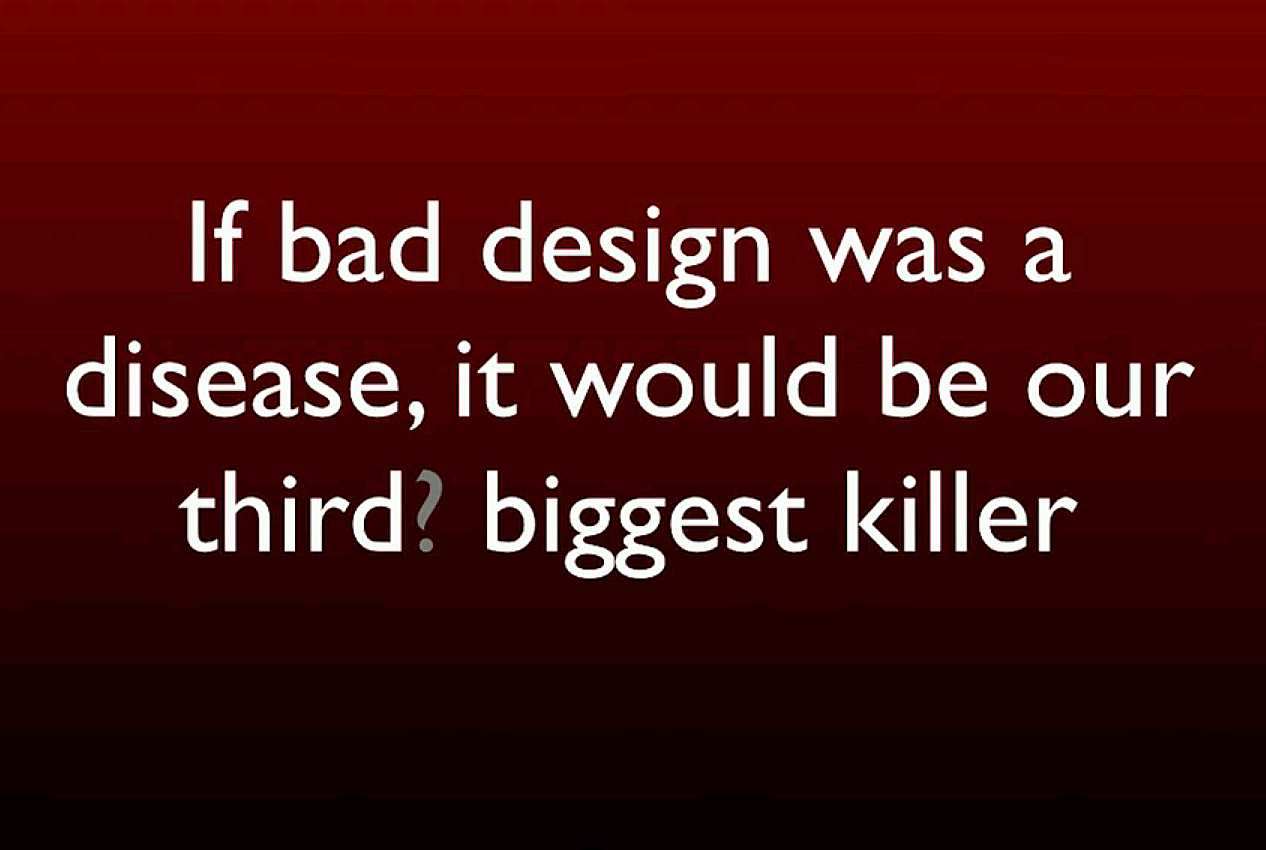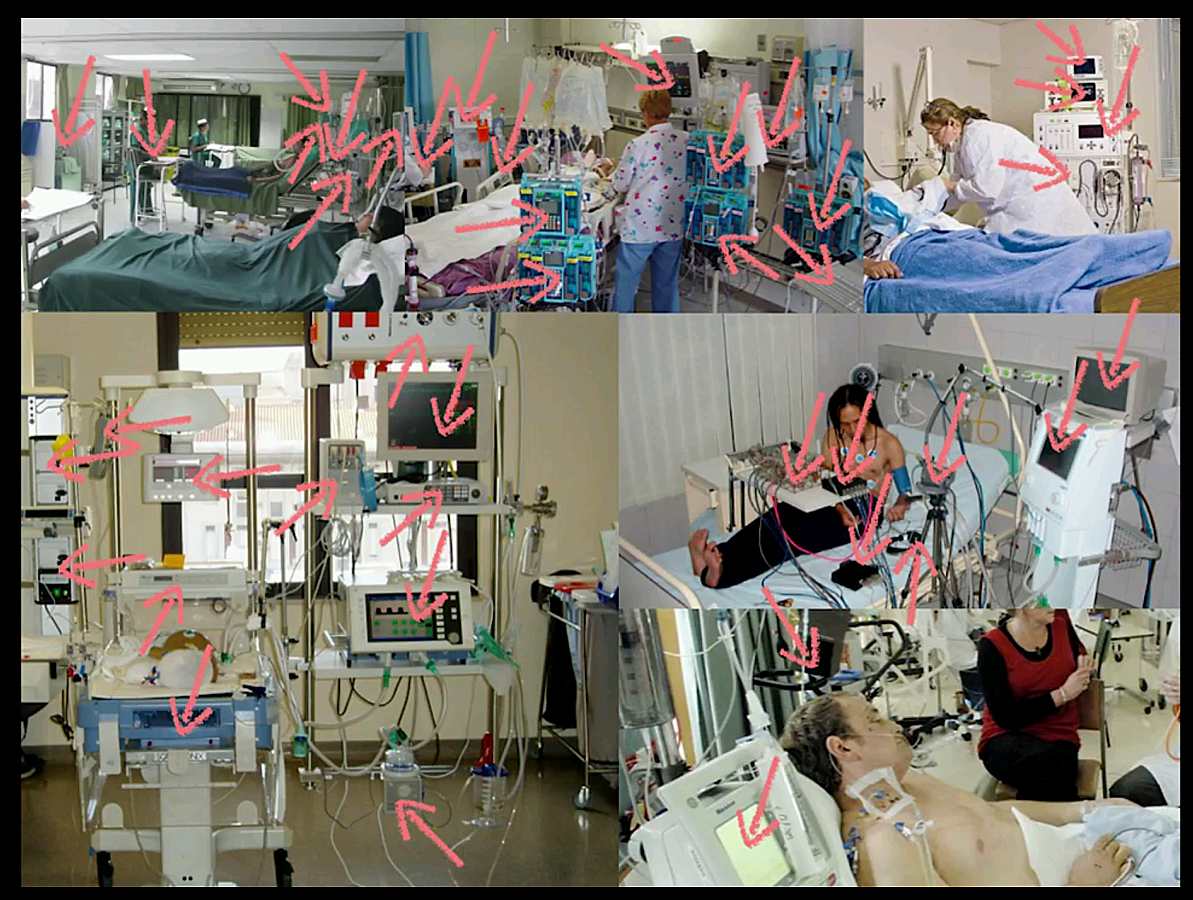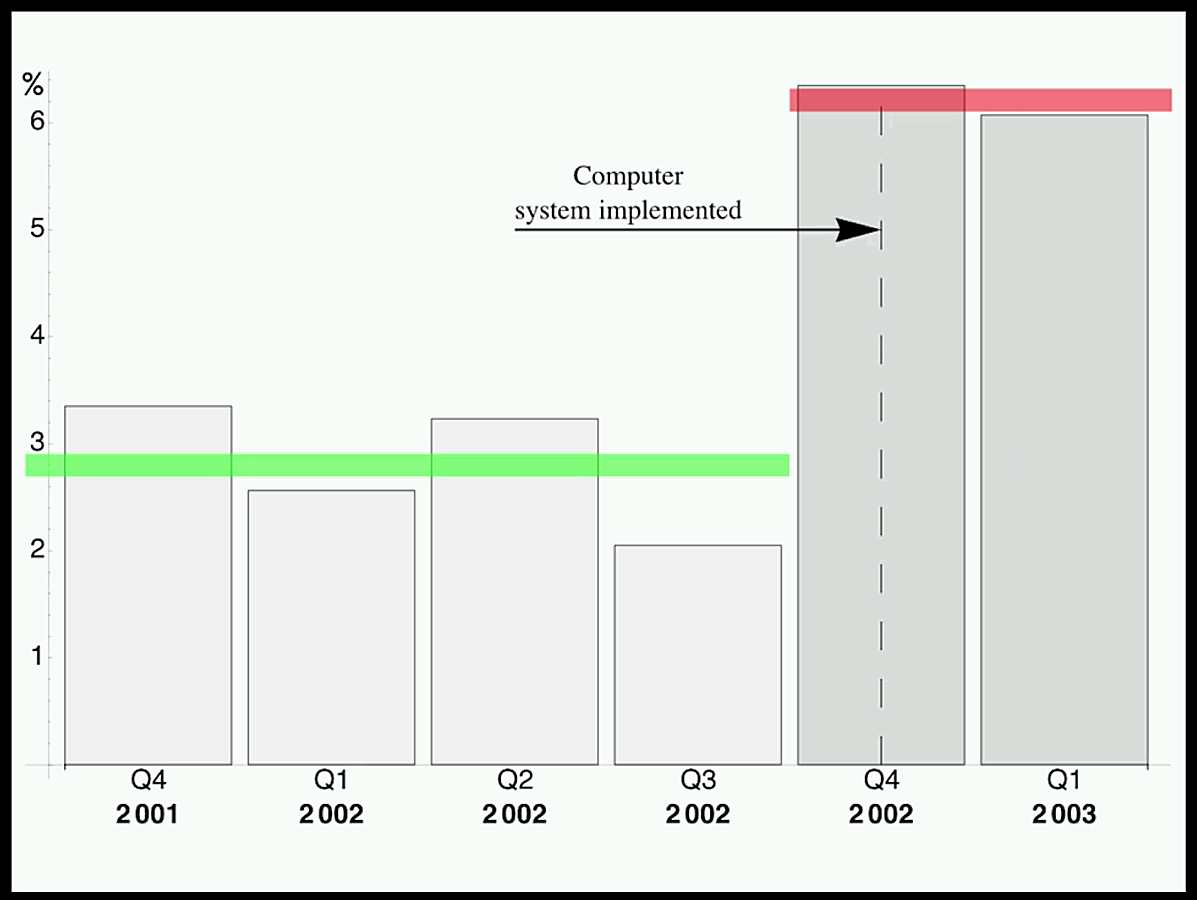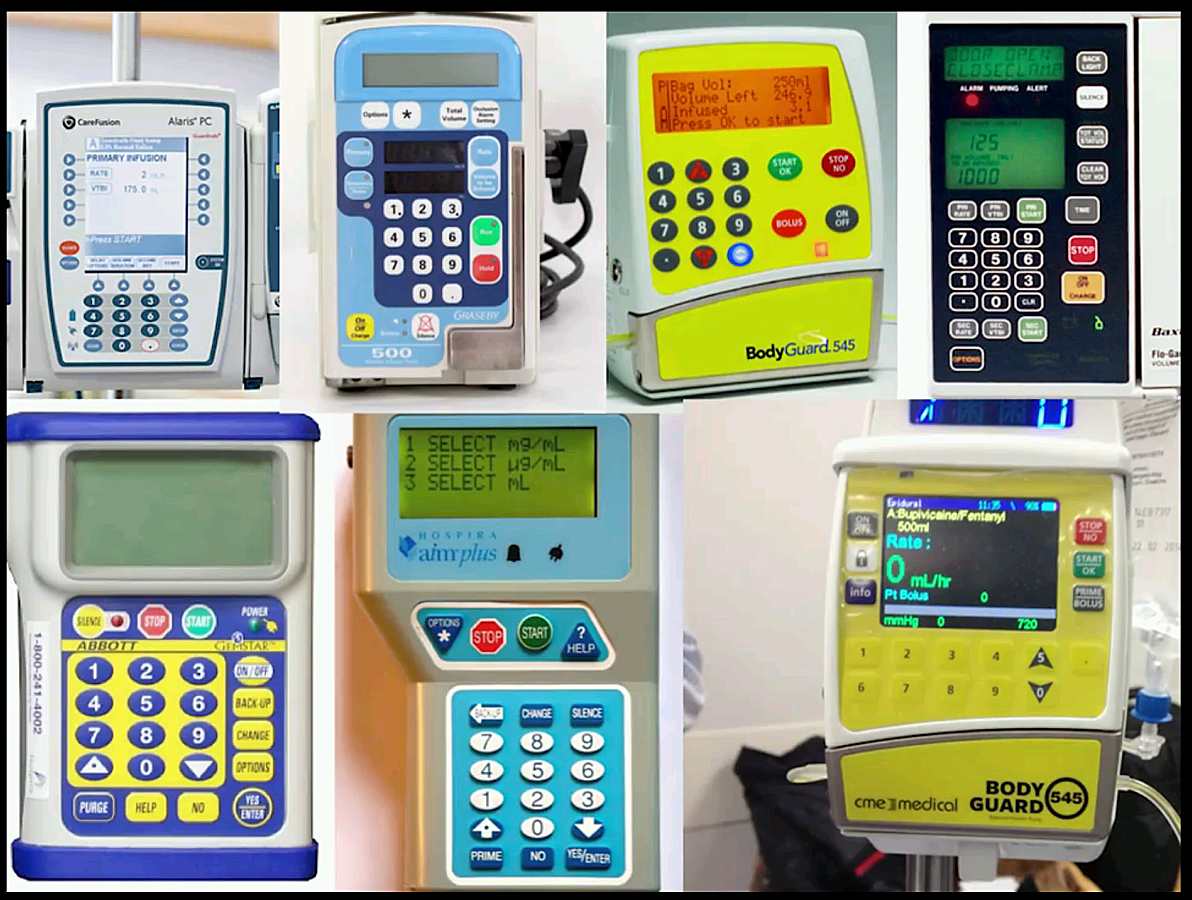Designing IT to make Healthcare Safer
1) Make you more aware of avoidable computer safety hazards in modern hospitals.
2) Encourage you to view the complete lecture Designing IT to make Healthcare Safer
- at Gresham College UK, Feb 2014
The ideas, pictures and text were grossly stolen from the presentation above.:
Professor Harold Thimbleby (quoting much from Massachusetts General Hospital) effectively presents his case that better equipment and software design (especially the user interface) will prevent much confusion and many/most hospital "human" errors.
The pictures presented here are about 1/4 of the images presented in the first half of his presentation -
This web page is a teaser to get you to see the "real thing" (above) :-)
We are about 1/4 of the way through the professor's presentation. He goes on with tragic examples of very easily made blunders.
Now we get into the actual errors -
"Calculators should not be used in hospitals, because they are unsafe. They allow you to make slips, and they don't care."
We are now almost half way through the professor's presentation ...
I think you will be fascinated, and very concerned , if you watch the whole presentation
Designing IT to make Healthcare Safer
The last half shows how to develop better designed products, (user testing and feedback among others),
and how to get the better products into hospitals ...
And also there should be tests during the product life to assure correct performance and calibration.
Here is his web site, CHI-MED
[ My comment, any proper electronics lab periodically
has its equipment checked for function and calibration, with a sticker on it to show the fact and date.
Complex medical equipment apparently doesn't presently get this verification. ]
A note: The aircraft industry safety record has greatly improved over the years. There are vigorous investigations of "incidents" by outside technically competent organizations, and vigorous enforcement of the "recommendations". Also the pilot's unions have been vigorous in pointing out the why's of "pilot error", defending pilots and pointing the finger at poor design and procedures. Apparently the nurse's unions are more passive?
Date of web page May 31, 2017, by Ed Thelen ;-))

